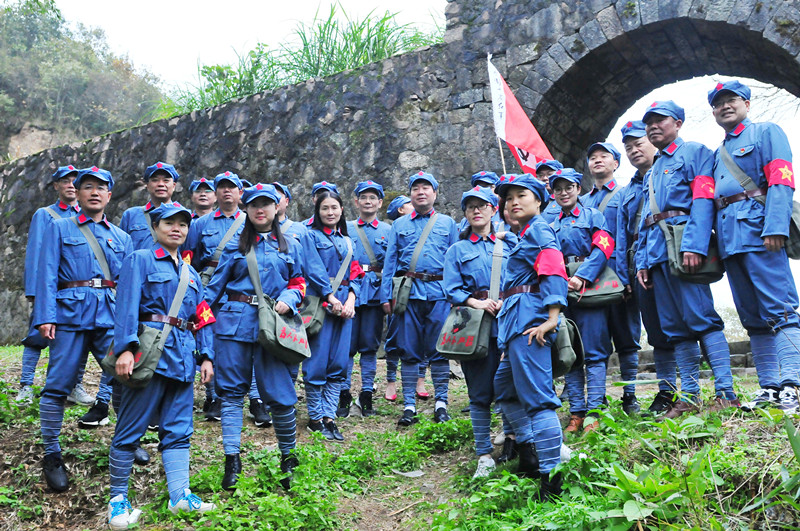教学设计-Earthquakes
|
教学设计内容 | |||||||||||||||||||||||||||||||
|
设计主题 |
人教版高一Book 1 Unit4 Earthquakes Reading A Night the Earth didn’t Sleep | ||||||||||||||||||||||||||||||
|
设计者 |
兰利华 |
工作单位 |
邵武一中 |
教学对象 |
高一学生 | ||||||||||||||||||||||||||
|
课 时 |
1 |
联系电话 |
18006098757 |
指导教师(限报一人) |
黄璐 | ||||||||||||||||||||||||||
|
1.整体设计思路、指导依据说明 | |||||||||||||||||||||||||||||||
|
一、指导依据 《高中英语课程标准》强调高中英语教学应帮助学生打好语言基础,着重提高学生用英语获取信息、处理信息、分析和解决问题的能力;逐步培养学生形成有效的学习策略和用英语进行思维和表达的能力,为学生进一步学习和发展创造必要的条件。同时课程要关注学生的情感,引导学生在英语学习的过程中,提高独立思考和判断的能力,树立正确的人生观和价值观,全面提高人文素养。 图式理论认为图式是认知的基础,人们在接受新信息前,头脑中已经储存了很多知识(即图式),在语言学习过程中,学生获得的背景知识越多,他们头脑中的内容图式就越丰富。学习理解的过程就是输入的文字信息与大脑中储存的知识结构相互作用的结果,如果学习者缺乏与学习材料相关的图式,或者输入信息没有激活相关图式就不可能得到图式反馈,理解过程就会发生”短路”。如果教师能够通过不同的方式或活动来帮助学生建立和丰富头脑中的图式,就能帮助学生成为成功的阅读者。 二、整体设计思路 基于新课标要求和图式理论,我将所设计本课程融合于本单元整体教学,使课前、课中、课后三个阶段紧密结合。 课前布置学生6人一组编写一期英语报纸,内容是关于唐山/旧金山大地震及地震的相关知识,要求学生充分利用本单元的词汇和句型;指导学生阅读workbook部分、练习册及补充材料中地震相关文章,预热单元目标词汇、了解文本主题背景知识,帮助他们构建、丰富图式。 课中通过观看多媒体视频、词汇抢答游戏、归纳段落主题、文本内容预测、标题探究、文本语言鉴赏与评价等各种环节循环练习目标语言知识;在深入学习文本内容的过程中操练略读、寻读等阅读策略及预测、归纳、猜测词义等阅读技巧,培养学生的评判性阅读视角;同时引导学生走近作者,走近文章,自然而然感受到人道主义精神和互助友爱精神的必要性。力求激活并丰富学生已有的图式, 课后安排学生背诵文章精彩句子、段落,完成主题报纸编写,继续主题阅读训练,帮助他们巩固图式,熟练阅读技能。形成一个完整的阅读(语言技能、学习策略)兼顾词汇、句型(语言知识)并关注学生情感态度的教学周期。 | |||||||||||||||||||||||||||||||
|
2.教学背景分析 | |||||||||||||||||||||||||||||||
|
一、教学内容分析: 所设计课程为本单元的阅读部分,文本以“地球的一个不眠之夜”为题,讲述的是1976年7月28日凌晨发生在河北省唐山市的大地震,内容包括震前的一系列前兆,地震对城市的破坏以及灾后营救。全文结构清晰,环环相扣,把握文章脉络并不难;但文章词汇量大,篇幅长,细节描写繁多,多处出现定语从句,同时作者还运用了比喻、拟人等修辞手法,这些都对学生的语言阅读能力提出了较高的要求。 本篇文章结构、内容上的这些特点有利于教师设计形式多样的教学活动对文本进行多重解读,可以从阅读技能角度训练学生理清文章的脉络、归纳主旨,把握细节的能力。从语言知识角度可以引导学生在语境中学习词汇,在语篇中理解句义,感知、学习新语言知识;还可以引导学生赏析文章中的佳句。从情感态度角度可以帮助学生认识到---如果我们对地震有更多的了解和认识,就可以减少或避免不必要的损失;以及引导学生积极面对灾难,增强社会责任感。 二、学生情况分析: 1. 知识储备 近年来无论是中国还是世界上的其他国家都是地震灾害频发,因此学生们对地震有一些了解。虽然教师在课前布置学生进行地震主题阅读,帮助他们丰富了背景知识,但是由于词汇和表达方式还是相对匮乏,学生们尚且不能很好地用英语去表达地震灾害的相关内容。 2. 学生基础 从语言知识方面来说,高一学生相对而言基础知识较为薄弱,运用英语进行交际活动的能力较差;词汇量较为匮乏,阅读速度慢,理解有偏差。从语言技能方面来说, 高一的学生刚刚踏进高中的校门,阅读习惯还处于摸索和养成的初期,因此良好习惯的引导和阅读方法和步骤的规范就非常重要了。同时这个年龄段的学生有着独立、爱表现自我的特点。因此,只有设置使他们感兴趣的活动,注重学习策略的指导,注意活动任务设置的梯度,才能让各个层次的学生都投入到课堂活动中来各有收获。 | |||||||||||||||||||||||||||||||
|
3.教学目标分析 | |||||||||||||||||||||||||||||||
|
一、知识目标 1.学生学习本课关于地震灾害描述的单词和短语。能根据语境及上下文了解:well, pipe, event, steam, canal, dam, shelter, nation , dirt,million, extreme, brick, electricity, miner等词的含义,模仿运用以下词汇:burst, at an end, in ruins, suffering, injure, destroy, shocked, rescue, trap, bury, dig out, think little of等。 2.学生将能理解课文内容,把握文本主要信息;并能正确、流利地朗读课文。 3. 引导学生欣赏课文中优美句子,了解一些英语修辞手法,赏析文章的语言表达艺术。 二、能力目标 1、 学生通过快速阅读查找段落主题,简要了解文章结构;通过细读了解地震发生的相关细节,提高查找、获取信息,分析及归纳能力。 2、 学生通过预测文章和段落内容,划分段落,加强预测、归纳总结的阅读技能。 3、 学生学习对文本内容、写作手法、谋篇布局等进行评价,提高评判性阅读能力。 三、情感目标 1. 提高学生对地震灾害的认识,领悟地震中体现出来的人间真情,培养互助友爱精神。 2. 通过互助式学习培养学生的合作学习的习惯。 | |||||||||||||||||||||||||||||||
|
4.教学重点、难点分析 | |||||||||||||||||||||||||||||||
|
教学重点: 1. 引导学生学习文章中的新语言知识(包括词汇、句式等),了解唐山大地震的震前、中、后的相关知识。 2. 帮助学生训练略读、细读等阅读策略和文章内容预测、词义猜测等阅读技巧,提升理解能力,培养良好阅读习惯。 3. 引导学生深层次解读文本,探究、评价文本内容,发展评判性思维能力。 4. 引导学生欣赏文中优美句子和作者语言表达手法。 教学难点: 1. 如何帮助学生养成良好的阅读习惯,掌握适当的阅读策略、技巧,提高阅读水平。 2. 如何帮助学生深化主题内容、巩固所学语言知识,并灵活运用于语言实践中,促进综合语用能力的扩展与提高。 | |||||||||||||||||||||||||||||||
|
5.教学过程设计 (中文为主 + 所教学科目标语言) | |||||||||||||||||||||||||||||||
|
教学过程
视频观看,激活背景图式 Warming up Pre-reading 话题背景:自然灾害 主题词汇预热 话题背景:自然灾害 文本主题预测
1. Skimming (2). Put them in right order 2.Detailed reading (2). Fill in the form (3). Listen and fill in the blanks
3. Read and think (2). What words or expressions will be used? 4. Appreciate the text (1) Which is the best title? (2) Your favorite sentences (2).Interviewing 具体步骤: Step 1:Warming-up and pre-reading Task1: Watch and say Get the ss to watch a video about earthquakes, and encourage them to pay attention to the words and expressions used in the video to describe earthquakes. (terrible , unexpected, destructive, damage, deadly, destroy, injure, suffering, rescue....) Task 2: How will you describe it? Ss are encouraged to describe the pictures by using the concerning words and expressions they have learnt before class. ( crack, track, pipe, useless, fall down, lie in ruins, burst, trap, bury, injure, trap, rescue, at an end) Task 3: If you were the writer... Ask the ss to talk about the following question in groups of four and then have some students to report what they have discussed. Q: What would you write about the earthquake if you were the writer? Rescue Signs Moving stories Earthquakes Scientific discoveries Damage Education ...... 设计意图:Task1通过视频及问题吸引学生注意力、激活相关的背景知识并切入主题,同时在活动中自然呈现本节课一些目标词汇destroy, injure, suffering, rescue,为理解阅读文章作好铺垫。Task 2则利用图片帮助学生回忆、熟悉他们预习的在阅读文章中将遇上的目标词汇,图片使学习的内容更加直观,加深学生对所学习词汇的印象,为下一步的阅读扫清词汇障碍。Task 3 让学生换位思考,其实是间接地让他们预测文章内容并激发他们对阅读文章的好奇心。 Step 2 (教师对本课教材内容进行整合,将文章的前三个段落打乱顺序,第四段内容安排在另一张材料上,然后将重整的文章和所设计的教学活动内容打印出来上课发给学生) Task 1 Skimming T: OK, now please take a very quick look at the three paragraph and see what the author write about. ( Ss are asked to sum up the main idea of the three paragraphs. Task 2 Put them in right order Get the ss to think over the following question and then put the three paragraphs in right order. Q: How does the writer develop the passage? Tell us your reasons. A. By space. B. By examples. C. By time. D. By cause and effect. SS: For three days 设计意图:Task 1是对学生本段的阅读效果进行初步的 “段落主题评估”,教师提醒学生可以通过关注段首段尾迅速概括段落主要内容。本篇文章4个段落结构相似,都可利用这个技巧训练学生抓住主题句快速归纳段落主题的能力。Task 2 通过请学生重排段落帮助学生理清文章发展脉络,在上一环节布置学生归纳段落主题后继续引导学生把握文章整体框架。 Step 3 1. Paragraph 1 Task 1. Complete the sentences. Q: Can you find out in what way the writer tried to describe the strange signs before the earthquake? (2) The water pipes cracked and burst. (3) A smelly gas came out of the cracks. strange signs (4) Mice ran out of the fields. (5) Fish jumped out of their bowls and ponds. Task 2. Take the place of the underlined parts by using the expressions in the text Strange things were happening, but the one million people ignored these events and were asleep as often happened. (thought little of; as usual) 设计意图:Task1 有两层目的:一是训练学生迅速获取文本细节信息的能力,而是引导学生关注作者的语言表示技巧--用一系列形似的动词词组形象地描绘出地震前一些动物不寻常的行为。 Task 2 则是为了自然呈现目标词汇 million, event,并用同义转换的方式利用学生大脑中已有的语言知识学习新的核心词汇think little of 和as usual。 2. Paragraphs 2-3 Task 1 Fill in the blanks
Task 2 Complete the sentences ① Thousands of families were killed. ② Two-thirds of them died or were injured. ③ Many children were left without parents. It seemed as if the world was at an end! ④ A large city was in ruins. ⑤ The suffering of the people was extreme. (2) Ss are encouraged to pay attention to use of the phrases: “be + p.p./adj”. With the help of the teacher, ss get to know that the writer uses this skill to show how destructive the earthquake was. Task 3 Listen and fill in the blanks All of the city's hospitals, 75 % of its factories and buildings and 90% of its homes were gone. Bricks covered the ground like red autumn leaves. No wind, however, could blow them away. Two dams fell and most of the bridges also fell or were not safe for travelling. The railway tracks were now useless pieces of steel.Tens of thousands of cows would never give milk again. Half a million pigs and millions of chickens were dead. Sand now filled the wells instead of water. 设计意图:Task 1 是对本段内容的 “细节理解评估”。题目难度不大,属于表层理解题型,侧重检查学生能否迅速获取文本关键信息。Task 2/3 则在快速阅读和听说任务中自然复现本课的目标词汇injure,in ruins,extreme,suffering, as if, at an end等;同时通过让学生关注文本语言(be + p.p./ adj和确切数字)的应用了解作者的写作技巧,引导学生从语言欣赏的角度理解文本,培养他们的评判性阅读策略。 Step 4 Reading II Task 1 What will be talked next ? (ss in groups of four) Q1: What will be talked in the next part ? Q2: What words or expressions would you like to use to describe it? Task 2 Read and think Q1: Why did the survivors feel that all hope was not lost ? dug out those who were trapped buried the dead rescued the coal miners built shelters for survivors Q2: Which sentence shows the same feeling of the survivors as the first one? (Slowly, the city began to breathe again.) 设计意图: Task 1 布置学生预测文本内容和将要出现的语言知识,目的是激发学生的阅读兴趣,激活头脑中原有的背景知识,在阅读中将自己的预测与文本内容进行核对,从而推动阅读成功进行。Task 2 训练学生迅速获取细节信息回答问题,同时自然复现目标词汇dig out, trap, bury, rescue等,并引导学生关注佳句(1) All hope was not lost. (2) Slowly, the city began to breathe again. Step 5 Reading III Task 1. Which is the best title? Q: Which one do you think is the best of the four, and your reasons? (1) A terrible Disaster (2) The (3) A Night that the Earth Didn’t Sleep (4) All Hope Was Not Lost Task 2 Your favorite sentences (in pairs) Ss: (1) It seemed as if the world was at an end. (2) Hard hills of rock became rivers of dirt. (3) All hope was not lost. (4) Slowly, the city began to breathe again. .... 设计意图:Task 1 要求学生对标题进行分析、评价,既帮助学习了好标题的标准,又引导学生回顾文章主旨,更加深入了解文本内容和作者写作意图。Task 2 让学生寻找自己喜欢的佳句,调动了他们自主探究文本语言的积极性。 Step 6 After reading Task 1 Retelling Ss are encouraged to retell the text by filling in the blanks. Task 2 Interview Ss are asked to choose a paragraph and act out an interview between a reporter and three survivors from the 设计意图: Task 1 让学生在回顾文章主要内容的同时初步运用目标词汇如:burst, think little of, injure, bury, trap, in ruins, destroy, rescue等。Task 2 以采访的形式让学生深化主题内容,同时在围绕话题开展对话活动中运用、巩固、提升目标语言知识。 Step 7 Homework 1. 复习课文,关注新语言知识朗读背诵优美句子。 2. 完成主题英语小报。 设计意图: 引导学生以不同方式巩固目标语言知识,赏析佳句。 (注意:每一教学步骤后要说明设计意图) | |||||||||||||||||||||||||||||||
|
| |||||||||||||||||||||||||||||||
|
评价内容: 1. 阅读技巧的应用包括对文章主题的把握和对文章细节的理解。 2. 对文本内容及使用语言的评价与探究。 3. 对课堂活动的参与程度、与组员的配合。 4. 对目标语言知识的掌握程度及语言表达效果。 评价方法:(形成性评价与终结性评价相结合) 1.自我评价 2.组员互评 3.教师评价 | |||||||||||||||||||||||||||||||
- 通知公告 更多









